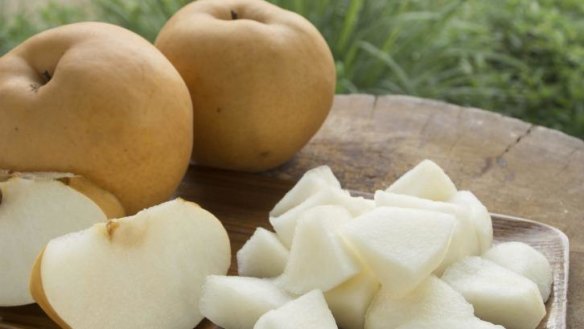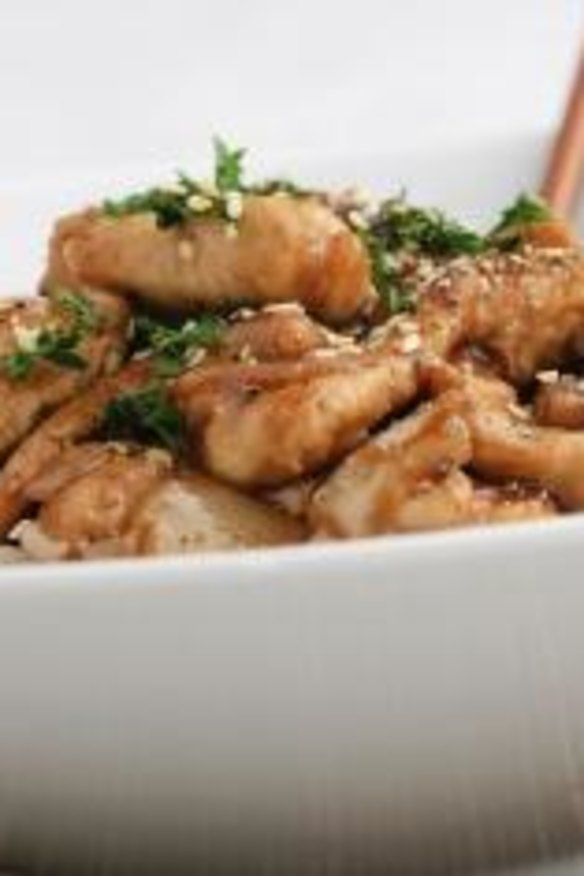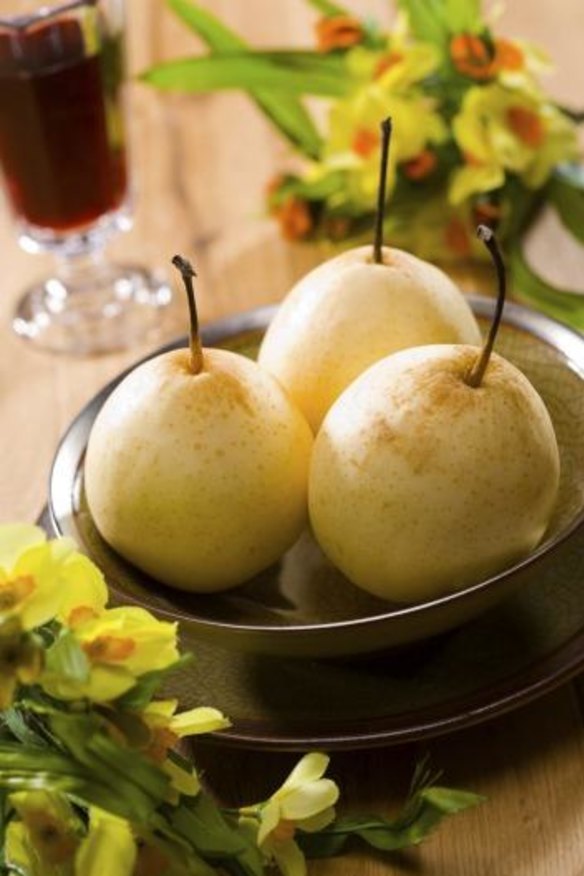Owen Pidgeon: Nashi, the perfect pear

As the morning dews are becoming a regular feature of our late summers, the pome fruits are ripening. Nashi are one of the first pears to ripen, along with the well-known European Williams pear, including its red sports such as Sensation.
Nashi are a good source of soluble fibre, folate, vitamin C and antioxidants so with their sweet juiciness, they are such a good late summer fruit to grow.
I write just nashi because the word in Japanese means pear. Nashi has been grown for millennia in Japan and the ripe fruits would be served to the Japanese Emperors in Tokyo during their harvest season.

There are just a few internationally recognised varieties of nashi. Kosui and the stronger tasting Shinsui new season nashi are appearing in shops and Farmers Markets right now, and the other main variety, Nijisseiki (twentieth century nashi) will ripen in about three weeks time.
The golden brown Kosui nashi remains slightly green on the underside until nearly ripe and then that section will turn to a golden shade. Kosui is a medium-sized fruit that is very, very juicy.
Shinsui also ripens in the highland regions in February, ripening quite quickly. Its skin is a quite dark shade of golden brown. Its flesh is creamy white, fine grained and tender but with a distinctive strong flavour.

The light green Nijisseiki nashi matures later, in early March. This fruit stays fully green until it is nearly ripe and then you will see again the golden shades appearing
One distinct difference between Asian and European pears is that the Asian pears do not ripen after they are picked from the tree. However, there is an important post-harvest ripening process with European pears: they need to be picked around 10 days before they are fully ripe, so if you have a neighbour who is growing nashi, encourage them to wait until they are fully ripe before picking and distributing them around the neighbourhood.
One other important point to note about growing nashis is that most years you will need to undertake a serious thinning program in late spring. With two cross pollinating varieties, such as Kosui and Nijisseiki, you will usually have between eight and 12 fruits set in each cluster. Unless you vigorously thin, you will end up with a whole lot of tiny fruit at harvest time.
Nashis have a juicy flesh when they are ripe and a distinctly Asian taste.
The later-ripening Ya pears that originated in northern China have a similar taste to nashi but they have the elongated shape of the European pears, just to make things even more confusing
Nashis are great for snacks and if they are not too large, can be a favourite in children's school lunches. Nashi can also lift the flavours of a summer salad: combine thin slices of nashi with the tangy rocket and mizuna, along with shredded lettuce and slices of red onion. You can make a Waldorf salad by substituting some or all of the usual diced apple with nashi and they are wonderful to use in stir fry cooking. Slices of nashi do not discolour when exposed to air, like the European pear.
Turn slightly unripe nashi into a sharp tasting chutney by adding ginger, jalapeno chillies and cayenne to the standard mix of fruit chutney ingredients.
Hot and sour chicken with nashi stir fry
2cm stalk lemongrass, finely sliced
2cm fresh ginger, peeled and grated
Juice of 1 lime
1 tsp fish sauce
1 tsp brown sugar
1 large green chilli
450g chicken breast fillets
2 large nashi
Combine the lemongrass, ginger, lime juice, fish sauce, sugar and chilli in a medium bowl and mix well. Slice the chicken into strips and toss through the marinade. (You can marinate the chicken the night before and just keep it refrigerated).
Drain the chicken and reserve the marinade. Fry the chicken until golden in a large, non-stick wok. Slice the nashi into thin wedged sections then add in the nashi to the stir fry and cook for a further 2 minutes. Pour the marinade over the stir fry and toss the combined ingredients well until all is hot.
Recipe courtesy the Australian Nashi Growers Association
This week in the garden
* Sow Asian greens including pak choi and mizuna, loose leaf lettuces and rocket for harvesting in late March and early April. Plant out the Little Finger and Paris Market quick-growing carrots and a selection of beetroots for an autumn harvest.
* Select the strongest one or two strawberry plant runners with each plant and bury the new roots into good soil. Trim off all other runners to keep the life force of the plant directed into producing a delicious autumn harvest.
* Dig out competing weeds and grasses from around your citrus trees and apply a plentiful quantity of chicken manure or cow manure around the drip line of each tree to boost autumn production (keep fresh manures well away from the stem of the tree).
* Trim back lavender and rosemary bushes but retain a little of the current year's growth. Prune off all the dead flowers from your roses and cut back all vigorous early season shoots.
Owen Pidgeon runs the Loriendale Organic Orchard near Hall.
Restaurant reviews, news and the hottest openings served to your inbox.
Sign up